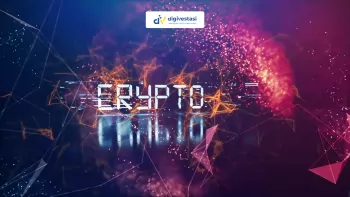
Crypto News
CME to Revolutionize the Market! 24/7 Crypto Futures Contracts Set for Early 2026 Launch
/index.php
Crypto News - Posted on 09 October 2025 Reading time 5 minutes

Understanding Layer 1 and Layer 2: The Foundation and Accelerator of Modern Blockchain Technology
The development of blockchain technology has introduced two key terms frequently discussed among developers and investors alike — Layer 1 and Layer 2. These two concepts play a crucial role in addressing the main challenges of the blockchain industry: transaction scalability, efficiency, and speed. So, what exactly are the differences and functions of these two layers?
Layer 1: The Core Foundation of Blockchain
Layer 1 refers to the base layer of a blockchain network that directly handles transactions and data storage within its own protocol. Blockchains such as Bitcoin, Ethereum, Solana, and BNB Chain are prime examples of Layer 1 systems.
At this layer, all processes of validation, consensus, and security are executed entirely within the main network, making it highly transparent and resistant to manipulation. However, this system faces major challenges in scalability. As the number of transactions increases significantly, Layer 1 networks often experience congestion, resulting in surging transaction fees (gas fees).
To overcome these limitations, several on-chain scaling upgrades have been introduced — including sharding, increasing block size, and changing consensus algorithms. These measures aim to enable the blockchain to handle more transactions without compromising on security or decentralization.
Layer 2: The Scalability Solution Built on Top of the Base Layer
Unlike Layer 1, Layer 2 is an additional layer built on top of the main blockchain, designed to reduce the transaction load. Its core principle is to move part of the transaction processing off-chain and later send the final result back to Layer 1 for verification.
By applying this approach, Layer 2 enhances transaction throughput, reduces gas fees, and shortens confirmation times — all without altering the core structure of the main network.
Examples of Layer 2 implementations can be found within the Ethereum ecosystem, through projects such as Arbitrum, Optimism, and zkSync. Technologies like rollups (both optimistic and zk-rollups), state channels, and sidechains have become popular methods for executing transactions efficiently off-chain before settling them back onto Layer 1.
Functions and Benefits of Both Layers
Layer 1 serves as the final authority for every blockchain transaction. All validated financial activities and smart contracts recorded on this network are stored permanently. The main advantages of Layer 1 include:
Ensuring data security and integrity through decentralized consensus.
Serving as the primary foundation for decentralized applications (dApps) and blockchain-based financial protocols.
Maintaining transparency, as all transactions can be publicly verified.
However, since every transaction must be processed directly on the main network, Layer 1 has a limited capacity, which can lead to rising fees during periods of high demand.
Meanwhile, Layer 2 offers complementary benefits as a supporting system, including:
Reducing the transaction load on the main network by executing transactions off-chain.
Lowering gas costs and speeding up confirmation times.
Enhancing user experience through faster and more efficient transactions.
Nevertheless, Layer 2 solutions still depend on the security of Layer 1 and face complex challenges in integration and interoperability between different protocols.
Challenges and Considerations in Layer 2 Implementation
While Layer 2 provides a significant solution to scalability issues, its implementation is not without risks. Some common challenges include:
Security and trust, particularly concerning bridges that connect Layer 1 and Layer 2.
Technical complexity, especially in ensuring cross-protocol compatibility.
Centralization risks, if Layer 2 operations are not designed to be open and transparent.
Delayed transaction finality, since some systems require additional time for verification on Layer 1.
Two Key Pillars of Blockchain’s Future
Both Layer 1 and Layer 2 are vital elements in the evolution of modern blockchain technology. Layer 1 serves as the foundation of security and decentralization, while Layer 2 acts as the acceleration engine that enables blockchain networks to operate more efficiently, quickly, and cost-effectively. Together, these two layers create an ideal balance between stability and scalability, paving the way for broader blockchain adoption across finance, business, and digital governance sectors.
What do you think about this topic? Tell us what you think. Don't forget to follow Digivestasi's Instagram, TikTok, Youtube accounts to keep you updated with the latest information about economics, finance, digital technology and digital asset investment.
DISCLAIMER
All information contained on our website is summarized from reliable sources and published in good faith and for the purpose of providing general information only. Any action taken by readers on information from this site is their own responsibility.